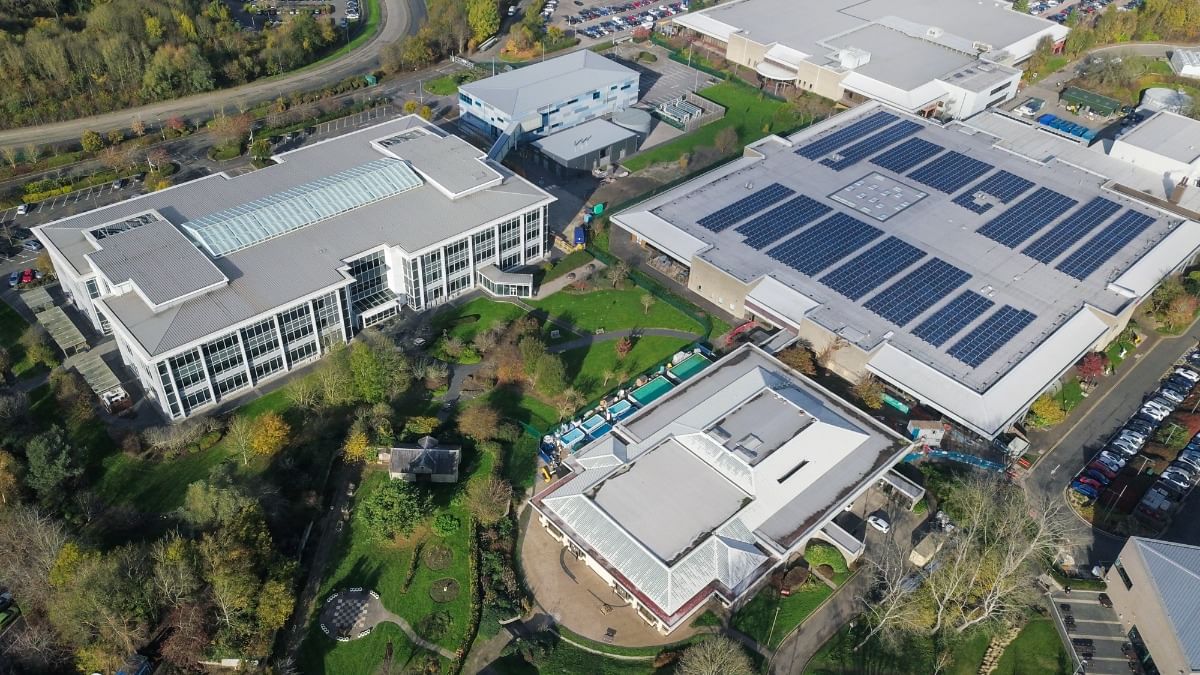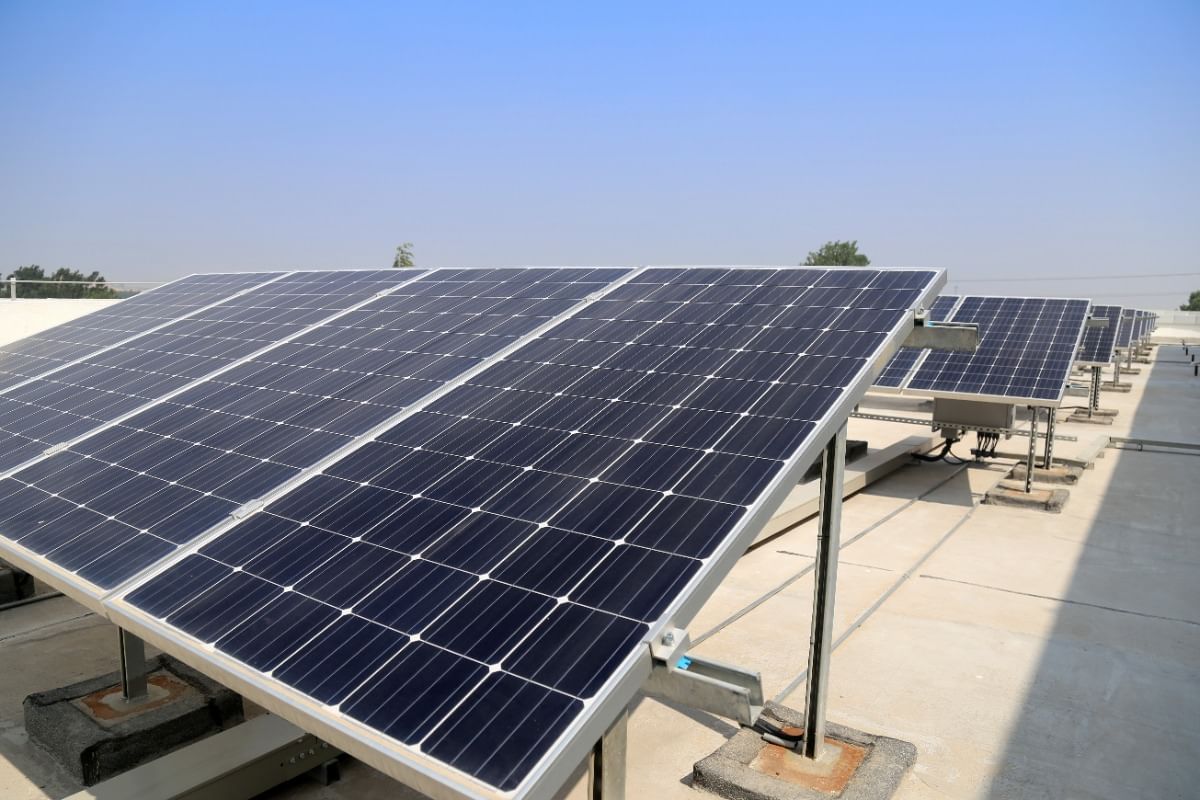
Nov 17th, 2025
Understanding the One Big Beautiful Bill (OBBB) and Its Impact on Solar Energy
The solar industry has always been shaped by legislation, but few bills have generated as much excitement and urgency as the One Big Beautiful Bill, often referred to as the OBBB. This legislation represents one of the most significant clean energy pushes in recent years, creating a rare window of opportunity for businesses and property owners to invest in solar with substantial federal support. For anyone considering solar energy through 93Energy, understanding the timing, incentives, and compliance details behind the OBBB could be the key to unlocking major financial advantages.
What Is the One Big Beautiful Bill?
The One Big Beautiful Bill is a comprehensive clean energy initiative designed to accelerate the transition toward renewable energy sources like solar. At its core, the bill enhances and extends the federal Investment Tax Credit (ITC), which allows businesses and property owners to deduct a significant percentage of their solar installation costs from their federal taxes. This credit makes solar projects not only environmentally appealing but also financially practical.
By incentivizing early investment, the OBBB seeks to reduce upfront costs and encourage large-scale adoption before deadlines narrow eligibility. While the bill supports various types of clean energy, solar has become its shining example, as companies like 93Energy help clients take full advantage of its benefits before key timelines expire.
How the Investment Tax Credit Works
The Investment Tax Credit has been a cornerstone of solar adoption in the United States for years. Under the OBBB, eligible projects can receive a credit covering between 30% and 50% of total installation costs, depending on the project’s scope and compliance with certain criteria. For commercial systems ranging from $750,000 to $6 million, this represents a potential savings of hundreds of thousands of dollars.
The credit is applied directly to the taxpayer’s liability, which means it functions more like a cash benefit than a traditional deduction. For businesses looking to control energy costs, meet sustainability goals, and reduce their tax burden, the ITC remains one of the most valuable incentives available.
Why Timing Is Everything
The most critical element of the OBBB is timing. Projects that do not begin construction by the end of the year will lose access to the current level of ITC benefits. To qualify, a project must show that at least 5% of its total cost has been committed through a deposit or other financial obligation by year’s end. This provision ensures that only serious projects moving toward construction can lock in these higher credits.
Once the 5% threshold is met, businesses must then demonstrate continuous construction progress during the first half of the following year. The idea is to maintain accountability and ensure that the tax credits drive real, timely development rather than speculative planning. Waiting too long to act could mean missing out on millions in potential savings.
What Does It Mean to “Begin Construction”?
The IRS provides specific guidance on what it means to “begin construction” for ITC qualification. Typically, this includes either the physical start of work on-site or meeting the financial safe harbor requirement by paying at least 5% of the total project cost before the deadline. The latter has become the preferred route for most solar clients because it allows flexibility while still securing eligibility.
For example, if a business plans a $1 million solar project, committing $50,000 toward equipment or construction contracts before December 31 establishes that the project has begun. However, simply signing an agreement or letter of intent without a financial component would not meet the criteria. 93Energy assists clients in navigating these details to ensure full compliance and peace of mind.
Maintaining Continuous Construction
The OBBB also requires evidence of continuous construction during the first six months of the following year. This condition helps prevent projects from stalling after claiming eligibility. Continuous construction can include on-site activity, procurement of equipment, or documented project management steps demonstrating progress toward completion.
For companies working with 93Energy, this stage often involves scheduling installation timelines, securing permits, finalizing equipment orders, and coordinating with local utilities. By maintaining this steady momentum, clients preserve their eligibility for the ITC while moving closer to operational savings.
The Four-Year Completion Rule
Another major provision of the OBBB is the four-year completion requirement. Once a project qualifies for the ITC, it must be completed and operational within four years to retain the tax credit benefits. This timeline gives businesses ample room for construction and administrative processes, but it also creates a clear boundary for planning.
Delays beyond four years can jeopardize the entire credit, meaning that all initial savings could be forfeited if a project is not finalized. Working with an experienced solar provider like 93Energy ensures that all design, permitting, and construction steps are completed efficiently, keeping clients on schedule to secure their incentives fully.

How Much Can Businesses Save?
The financial impact of the OBBB can be transformative. Depending on system size and design, a solar installation can see 30% to 50% of its total cost covered through tax credits. For a $1 million project, that equates to $300,000 to $500,000 in direct tax benefits. When paired with additional state or utility incentives, the payback period for solar often shortens to just a few years.
Beyond these initial savings, the long-term reduction in electricity costs offers a lasting return on investment. Many businesses find that once their solar systems are fully paid off, their operational costs drop dramatically, allowing them to redirect funds toward growth and sustainability initiatives.
Why the Deadline Matters for Commercial Solar Projects
Large-scale commercial solar installations often take months to design, permit, and prepare for construction. Missing the OBBB deadline could mean losing tens or even hundreds of thousands of dollars in potential credits. With the 5% commitment required before year-end, proactive planning is essential to avoid last-minute complications.
Companies waiting until the final weeks of the year to start paperwork risk running out of time. Partnering with a provider like 93Energy allows businesses to move quickly through the approval process and secure their eligibility well before the cutoff date.
What Happens If You Miss the Deadline?
If a project fails to meet the 5% payment or construction start requirement by year-end, it will no longer qualify for the enhanced ITC rates offered under the OBBB. Instead, it may fall under a lower credit tier or lose eligibility entirely, depending on future legislation and tax code revisions.
For many organizations, this could mean the difference between moving forward with a solar project and postponing it indefinitely. The urgency surrounding these deadlines is real, and taking early action ensures the maximum return on investment while minimizing risk.
How 93Energy Helps Businesses Navigate the Process
93Energy specializes in helping clients take advantage of federal and state solar incentives like those offered under the OBBB. From the first consultation, the team provides transparent cost estimates, timeline projections, and compliance checklists that align with IRS requirements. Each project is managed with precision to ensure that no step is overlooked in qualifying for the ITC.
Clients also benefit from 93Energy’s established relationships with trusted suppliers and contractors, streamlining the procurement process. This partnership-oriented approach allows businesses to focus on their operations while 93Energy handles the technical, financial, and regulatory details of going solar.
How to Prepare Your Project Before the Deadline
Preparing a solar project under the OBBB involves more than just signing a contract. It requires documentation, financial commitment, and coordination with various stakeholders. The earlier a project begins, the smoother the process will be.
Key preparation steps often include:
- Conducting a site assessment and energy analysis
- Finalizing system design and engineering specifications
- Securing necessary financing or payment arrangements
- Signing procurement and construction agreements
- Making the required 5% deposit before the deadline
By following this sequence, businesses can confidently lock in their tax credit and begin construction on schedule. 93Energy’s experienced project managers oversee every stage to ensure all deadlines and documentation requirements are met.
Why the OBBB Represents a Rare Opportunity
Legislation like the OBBB does not come around often. For many business owners, this may be the best chance to leverage federal policy for significant solar investment savings. The combination of tax incentives, sustainability goals, and energy independence makes this moment ideal for moving forward.
Beyond financial benefits, adopting solar under the OBBB demonstrates corporate responsibility and environmental leadership. Companies that act now position themselves ahead of future regulatory changes, energy price increases, and shifting public expectations.
What Happens After Installation?
After installation, the benefits of the OBBB continue long into the future. Solar energy systems reduce monthly utility costs, stabilize long-term expenses, and increase property value. Businesses often find that their commitment to renewable energy strengthens their brand image and attracts environmentally conscious clients or partners.
Additionally, systems installed under OBBB guidelines contribute to broader environmental goals by reducing carbon emissions and dependence on fossil fuels. Each project completed under the bill brings the nation closer to a more sustainable, self-reliant energy future.
How the OBBB Strengthens the Solar Industry
By expanding financial access to solar projects, the OBBB stimulates growth across the entire renewable energy sector. Manufacturers, contractors, and local economies all benefit from increased demand for clean energy systems. This ripple effect creates jobs, encourages technological innovation, and drives down long-term installation costs.
93Energy plays a vital role in this ecosystem by turning legislative incentives into practical energy solutions. Through expert guidance and efficient project management, they ensure that each installation contributes to both individual savings and collective environmental progress.
Should You Act Now or Wait?
Given the approaching deadlines and the financial scale of the potential savings, waiting is rarely the smarter option. Even if your business is still evaluating the best system size or financing model, initiating the process ensures that you remain eligible for the ITC under the OBBB. Delaying until next year could eliminate that advantage entirely.
93Energy encourages interested clients to schedule a consultation as soon as possible. The team can help evaluate project feasibility, calculate savings, and begin the steps necessary to qualify before the window closes.
Secure Your Solar Advantage with 93Energy
The One Big Beautiful Bill has created a moment unlike any other for commercial and industrial solar investment. With up to half of total project costs covered through the Investment Tax Credit, the potential for savings and sustainability is enormous. Yet the opportunity is fleeting, and only those who act now will capture its full rewards.
93Energy stands ready to help you navigate every step, from design to installation to compliance. By partnering with a team that understands both the technical and regulatory sides of solar, your business can move forward confidently, knowing your investment is protected. Reach out today to start your project and secure your place in the future of clean, affordable energy.